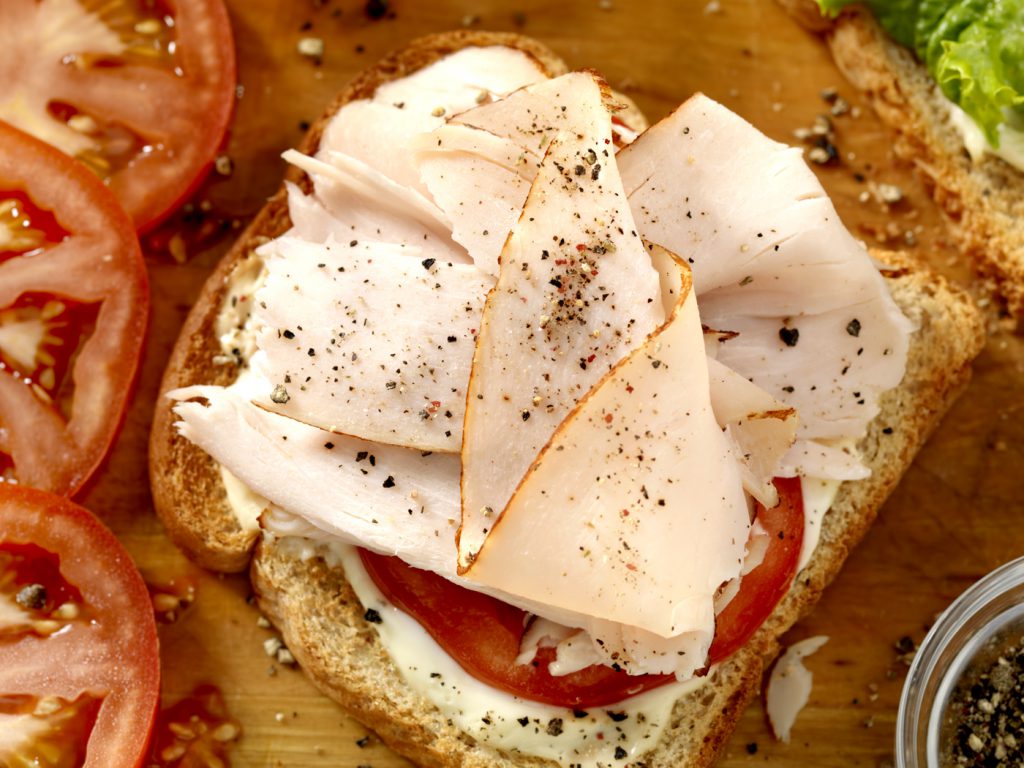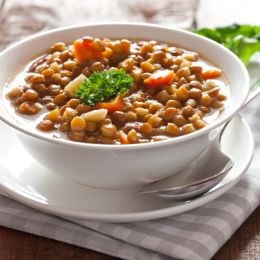5 No-Cook Foods That Pack Almost 30 Grams of Protein
Keep these groceries on hand to stay strong through the decades.

Getting enough protein can feel like an enormous challenge. After all, one review published in Applied Physiology, Nutrition, and Metabolism concluded that older adults need to eat 25 to 35 grams of protein at breakfast, lunch, and dinner to protect their levels of lean muscle mass, stay strong through the decades, and fight fat.
To be clear, 25 to 35 grams per meal is a lot of protein, especially if you’re not someone who regularly prepares every meal at home.
But it’s not impossible. You can give your body the protein it needs with zero baking, roasting, sautéing, or even microwaving anything. How? By making these five no-cook, protein-packed foods a staple on your grocery list.
1. Greek Yogurt
One cup of low-fat Greek yogurt contains between 22 and 23 grams of protein, depending on the brand you buy, says New York City–based dietitian Michael Perkins, R.D.N. Plus, it’s rich in calcium, which is vital to muscle and bone health.
Serve it up: Eat Greek yogurt solo or as a base for mix-ins including nuts, fruit, or granola, Perkins recommends. Avoid flavored and fruit-on-the-bottom varieties, which tend to be high in added sugars and chemicals.
A great time for Greek yogurt: after a cardio workout or strength training. Wish you had free access to gyms and fitness classes? Check your eligibility for SilverSneakers here.
2. Canned Tuna
Perhaps one of the most underrated protein sources out there is the lone tuna can. Depending on the brand and package size, you’ll get 20 to 25 grams of protein, Perkins says. You’ll also get heart-, brain-, and muscle-healthy omega-3 fatty acids.
If you’re not used to the fishy taste, try flavored options. Many brands now offer tuna in flavors like lemon dill and sriracha. Just keep in mind that these pouches tend to contain less tuna and closer to 15 grams of protein, but there’s no reason that you can’t enjoy two pouches per sitting.
Serve it up: A great, easy way to enjoy canned tuna is with tuna salad, says Stacey Wiseman, R.D., a registered dietitian at Five Star Senior Living. All you have to do is mix your favorite plain or flavored tuna with some low-fat cottage cheese (avoid any with carrageenan) and your choice of vegetables. Serve on top of lettuce or between two slices of whole wheat bread.
3. Protein Powder
It’s hard to beat the convenience of protein power. A single scoop contains roughly 20 to 30 grams, depending on the type you choose. Most experts agree that whey protein isolate is best for muscle health, with a 2017 study from McMaster University in Canada finding that whey protein supplementation improved muscle strength and mass in older adults.
If you can’t tolerate whey, casein protein powder maybe a better option. It comes from milk but is lower in lactose. If you’re lactose intolerant or vegan, there are plenty of plant-based protein powders available.
Need a little more help picking out a protein powder that’s right for you? Talk to your doctor about your overall nutrition and health needs.
Subscribe to our newsletter
It's quick and easy. You could be one of the 13 million people who are eligible.
Already a member? Click to discover our 15,000+ participating locations.
Follow Us
Serve it up: Fire up the blender, and start experimenting with protein shakes. Add one scoop of protein powder and one cup of milk to your blender, along with frozen fruit, a handful of greens, a tablespoon of chia or flaxseed, and some nut butter or avocado, and you’re good to go, says Indiana-based dietitian Kristin Hullett, R.D.
4. Whole Cuts
Whole cuts are basically the less processed version of standard cold cuts. You’ll find whole ham, turkey, and pot roast that’s been cooked and then sliced—no strangely round shapes or plastic-like textures. Look for packages with fewer ingredients and the most protein possible. Many minimally processed whole cuts contain up to 26 grams of protein in a four-ounce serving.
Serve it up: While you can easily eat whole cuts plain straight from the fridge, there are plenty of delicious ways to dress them up. Spread hummus on one side of each slice, and wrap them around carrots, celery, or even grape tomatoes. Or you can always go traditional and make a sandwich—add spinach, tomatoes, or other nutrient-packed toppings.
5. Cottage Cheese
One cup of low-fat cottage cheese contains 28 grams of protein—that’s even more protein than Greek yogurt! And the majority of those grams come in the form of slow-digesting casein protein. Since it takes your body longer to break down and absorb casein, eating it as a bedtime snack can help you build muscle all night long, according to research from Medicine and Science in Sports and Exercise.
Serve it up: While you can eat cottage cheese plain, most people find that it needs a little extra something to boost the flavor. Try serving it with berries or melon, or simply slathering it on top of toast, Wiseman says. It tastes great as it melts!





